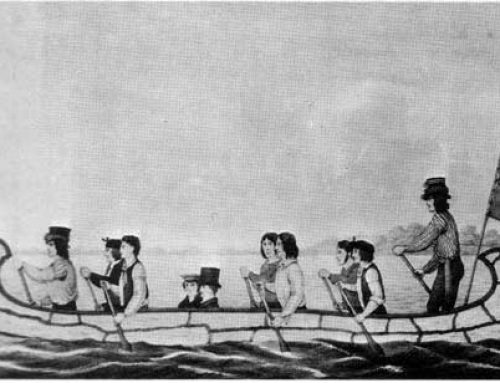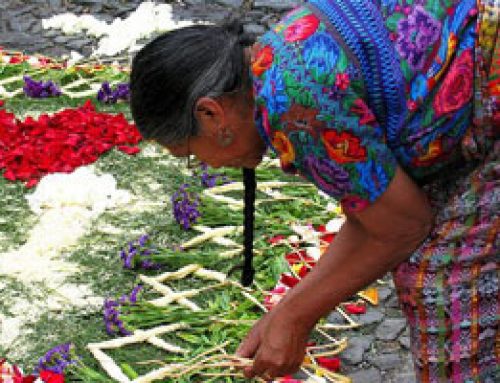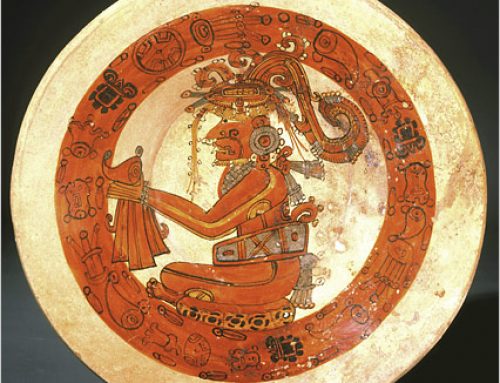
Rock Art from Utah, about 1700 AD
In 1500 AD, there were many different religious faiths across North America. Each group of people worshipped their own gods. All of these faiths did have some things in common though. All of them were polytheistic. (They worshipped many gods.) And all of them thought some of their gods were representatives of natural things like rain or the sky or the earth. In these ways, these religions were like Chinese religion, or Hinduism, or African traditional religion, or Greek or Roman religion.
But then most of the people in North America died of smallpox and measles. There were not very many people to carry on these traditions and worship these gods. And many people thought that the gods must be angry with them. Or the gods must have left them and gone away. Otherwise why would so many people have died? During the 1500s AD, Spanish Catholic priests came from Europe to North America and converted some people in the south to Catholicism. By 1630, many Pueblo people had converted to Catholicism.

San Miguel mission church (Santa Fe, 1600s)
Around 1600 AD, Protestant missionaries began to come from Europe to North America. They tried to convert people to their own kind of Christianity. Some people did convert. Others decided to stick with their own religion. Meanwhile, more and more Christian settlers began to arrive in North America, especially on the East Coast and the West Coast. These groups included Puritans, Baptists, Quakers, and other Protestant groups. Jewish settlers also came to the East Coast, looking for freedom from persecution, in 1654.
In the 1700s, many more settlers came to North America. Most of them were Protestant Christians, but others were Catholic, Jewish, Muslim, or Buddhist. Some of the people from Africa who came as slaves were Muslims, and some followed traditional African faiths. When men wrote the Constitution of the United States at the end of the 1700s, the Bill of Rights said that all of these religions were allowed. The United States government could not treat any religion better than any other religion.

A wedding of two black people held in slavery, from 1820
During the 1800s, most of the enslaved African people converted from Islam or their traditional African faiths to Christianity. Some became Catholics, but most of them became Protestants, especially Baptists. Also, more and more settlers came to North America from all over Europe and Asia. Many of the people who came from Ireland, Italy, and Poland were Catholics. Many of the Asians were Buddhists, and some of them stayed Buddhists in America.
There was a lot of fighting between the Protestant and the Catholic Christians in North America. They celebrated Christmas in different ways. For instance, only Protestants had Christmas trees. Only Catholics built nativity scenes. But the Bill of Rights‘ call for religious freedom mostly kept the government from getting involved. Also in the 1800s, several new religions began in North America. Some important ones were Mormonism, Christian Science, and the Jehovah’s Witnesses.

Ghost Dancers
In the last part of the 1800s, European and Asian settlers spread out and conquered all of North America. So fewer and fewer people followed traditional North American religion. Most Native American people converted to Protestant Christianity. A lot of people followed Wovoka, a Paiute man who believed that he was the Messiah come to save the native people of North America through the Ghost Dance.
At the same time, there were a lot of new movements within Protestant Christianity among the white people, where people tried to get closer to God with various different kinds of worship. Some examples are the Shakers and the Oneida community. As women were forced to stop going to public parades, private, home celebrations like Thanksgiving and Valentine’s Day became more popular. To make Christmas more of a home holiday, people tried to stop Christmas caroling, and the begging moved first to Thanksgiving, and then back again to Halloween.
In the early twentieth century, many young people moved away from their families. They traveled to the big cities to find work in the factories there. A lot of these young people stopped going to church, or went less often than before. Religion was still very important to most people. But many people prayed alone, at home, instead of in churches.

Emmanuel church today, standing where Denmark Vesey built his church
By the 1950s many Protestants began to try to get people to go back to church with new churches. At these new churches, the ministers said that what was really important was your own personal connection with God, and reading the Bible. But they organized Bible study groups and church meetings to help you do that. This movement became very popular, and many people did begin going to church more. We call this movement Fundamentalist or Evangelical. It’s “Fundamentalist” because it goes back to earlier versions of Christianity. And it’s “Evangelical” because it tries to convert people and get them to go to church.
On the other hand, other people who had been Protestant converted to other religions. Many black people decided in the 1960s to go back to Islam or to traditional African religions. Many white people decided to become Buddhists or Hindus or Taoists. Generally, more people in the South and the center of North America became Fundamentalists or Evangelicals, while more people along the East and West coasts became Muslim, Buddhist, or Taoist, or became atheists and followed no religion at all.




